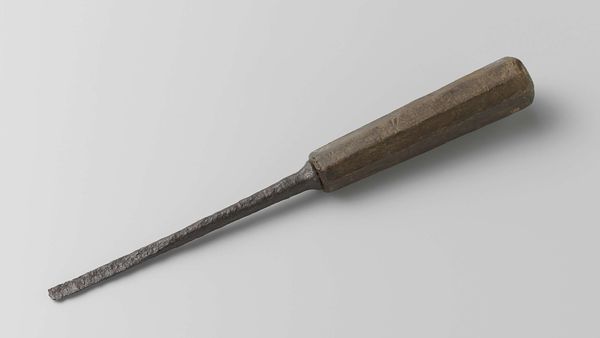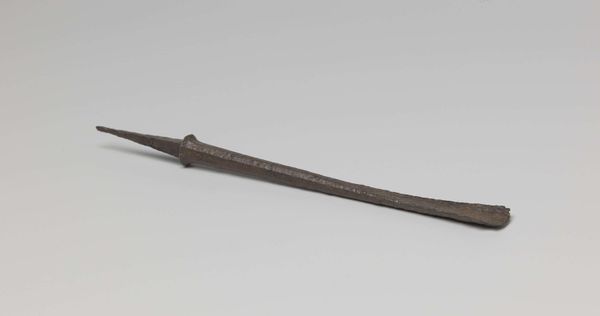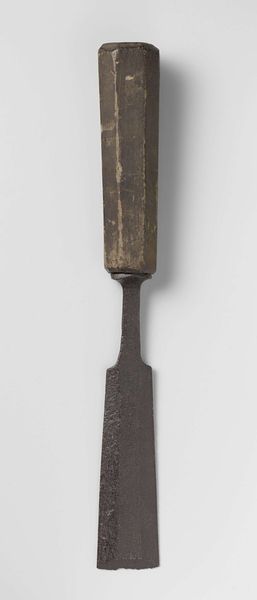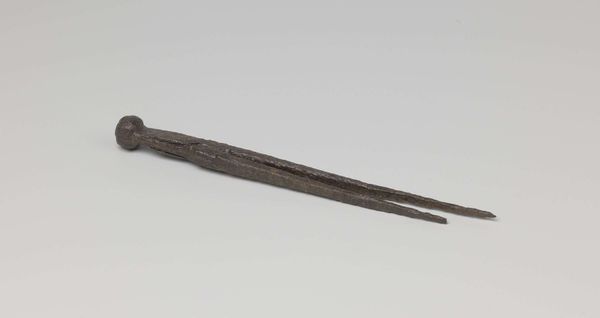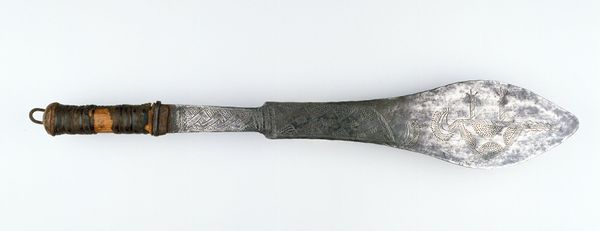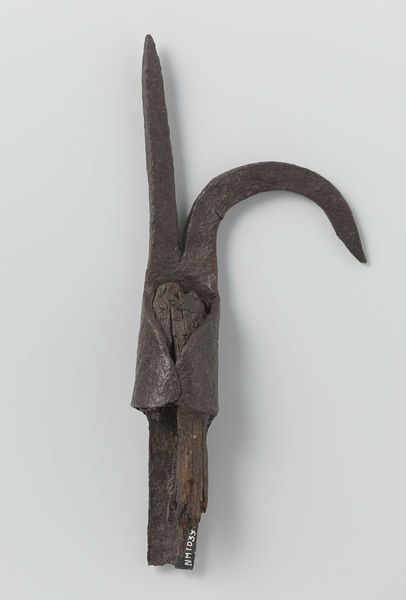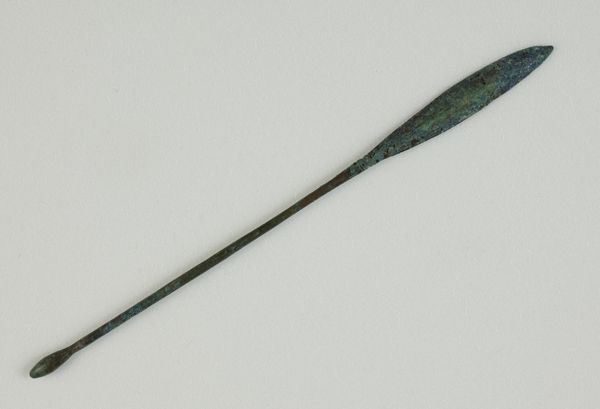
metal, wood
#
metal
#
wood
#
italian-renaissance
Dimensions: length 24.2 cm, width 1.3 cm
Copyright: Rijks Museum: Open Domain
This table knife with a hexagonal horn handle, now residing in the Rijksmuseum, is a potent symbol. Its serrated edge is not merely functional; it speaks of tearing and dividing, actions deeply rooted in human experience. Consider the knife across cultures: from ancient sacrificial rites where it held sacred, transformative power, to its presence in domestic settings, laden with the tension of family dramas, its symbolism has evolved. The act of cutting can represent pain, violence, separation, but also liberation or clarification. Think of Alexander the Great cutting the Gordian Knot: a decisive stroke to solve an intractable problem. The knife’s emotional charge is undeniable. It appears in dreams as a symbol of repressed aggression or unresolved conflict. The feel of its handle, the glint of its blade, can evoke powerful, primal responses, engaging viewers on a subconscious level. Thus, this humble table knife becomes more than just a tool, and is part of an ongoing, cyclical evolution of its symbols, resurfacing and taking on new meanings in different contexts.
Comments
No comments
Be the first to comment and join the conversation on the ultimate creative platform.




